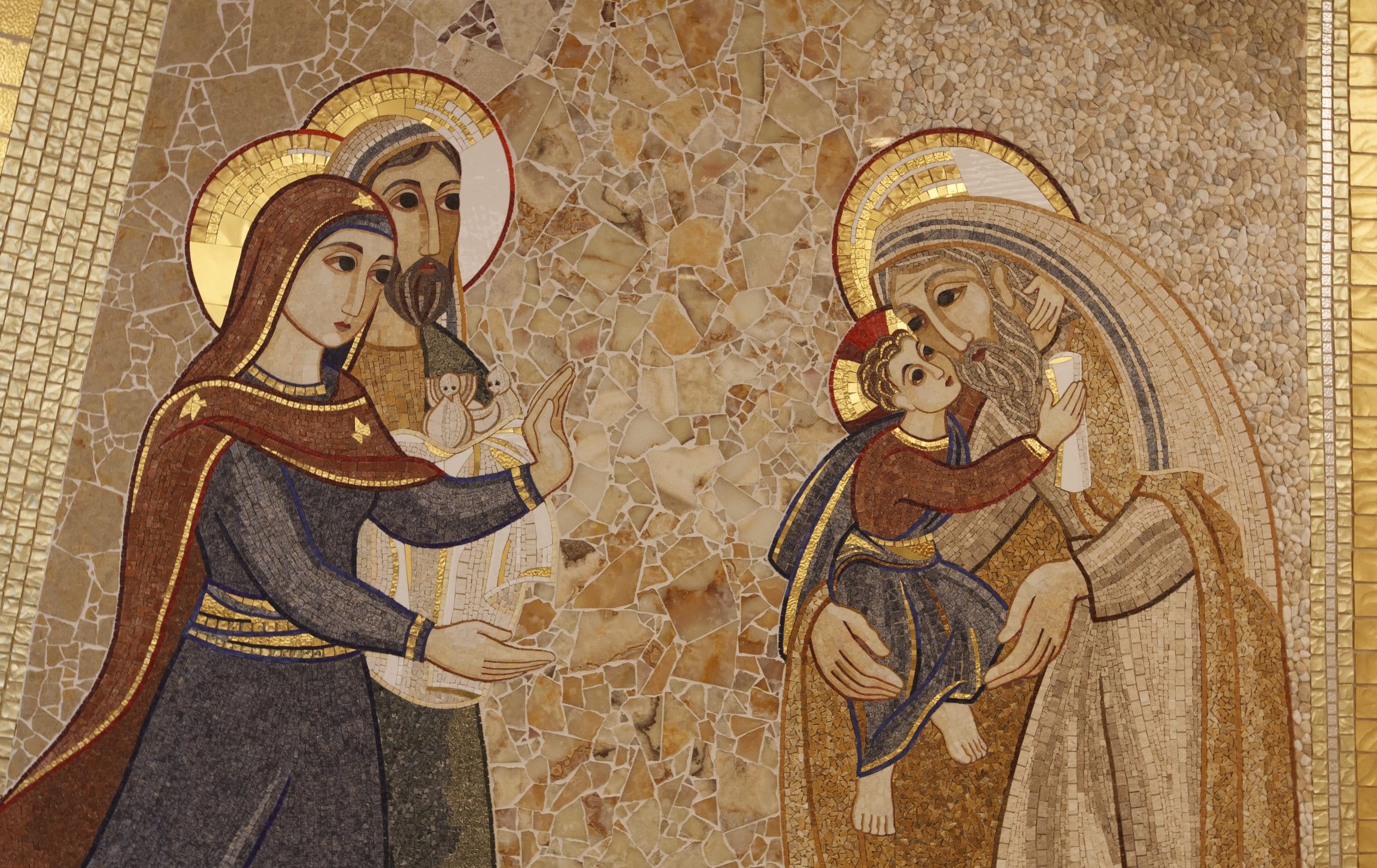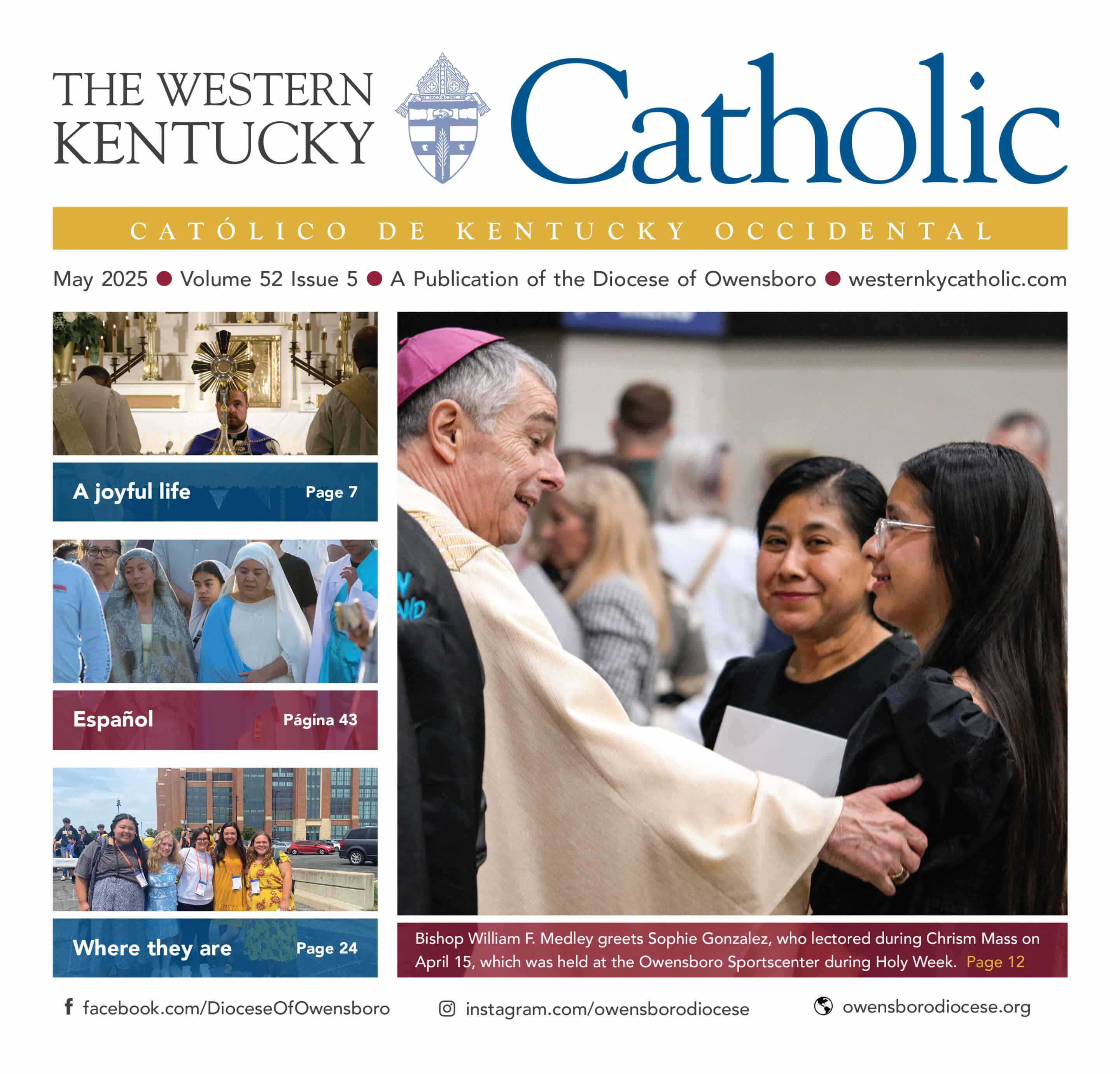
A mosaic of Mary and Joseph presenting the child Jesus to Simeon decorates the chapel of the Jesuit infirmary in Rome June 8, 2012. (CNS photo/Paul Haring)
Surrendering to God through the prayer of Simeon
My Dear Sisters and Brothers in Christ,
February 2nd is the Feast of the Presentation of the Lord. It comes 40 days after Christmas and thus recalls the ancient Hebrew tradition of the ritual purification of a woman after childbirth. Until the liturgical reforms after the Second Vatican Council, the feast was called the Purification of Mary.
Coinciding with the tradition of ritual purification was a ritual dedication – this presentation – of a first-born male. In Luke’s Gospel it is recorded: “When the days were completed for the purification, according to the law of Moses, they took him up to Jerusalem to present him to the Lord, just as it is written in the law of the Lord, ‘Every male that opens the womb shall be consecrated to the Lord,’ and to offer the sacrifice of ‘a pair of turtle doves or two young pigeons,’ in accordance with the dictate in the law of the Lord.”
Thus, the Church has chosen to highlight the dedication of the newborn Jesus on the fortieth day after his birth.
Only Luke recounts this story of the Presentation. In his rendering he presents a character who sort of steals the show. An elderly man named Simeon was in the temple. Luke describes him as holy and devout, in whom the Holy Spirit was present. He goes on to say that Simeon had been promised by the Holy Spirit that he would not see death before he had seen the promised Messiah of Israel.
When Mary and Joseph brought the child into the temple, Simeon recognized that God’s promise to him had been fulfilled. He took the child into his arms to praise God. We might only imagine how Mary and Joseph must have been startled by this experience, as they were when angels, shepherds, and magi had found their way to Bethlehem.
The show was stolen by Simeon’s prayer: “Now, Master, you may let your servant go in peace, according to your word, for my eyes have seen your salvation, which you prepared in sight of all the peoples, a light for revelation to the Gentiles, and glory for your people Israel.”
February 2 has also traditionally been observed as Candlemas Day, a day to bless the candles used in liturgy and home devotion for the year. The tie-in also comes from Simeon’s Canticle, “a light for revelation to the Gentiles, and the glory of your people Israel.” There is a tradition that people would light a blessed candle in their homes during extreme weather as a quiet prayer of confidence in God’s protection.
The Church has memorialized Simeon’s prayer as the canticle prayed at Compline, the Church’s official night prayer, in the Liturgy of the Hours.
When I was first introduced to this formal night prayer as a young man, I cherished the words “let your servant go in peace,” seeing it as the final words of the day before one would rest for the night. As I read those words now, I more readily hear them as Simeon surely meant them, a surrender to God at the end of a long life celebrating that God’s promises had been fulfilled in his life.
So whether we read these words as a young person for whom death is presumed to be far off, or as a person of advancing years, the words are comforting: “Dismiss your servant in peace.”
Sincerely in Christ,
Most Reverend William F. Medley
Diocese of Owensboro
Originally printed in the February 2023 issue of The Western Kentucky Catholic.


